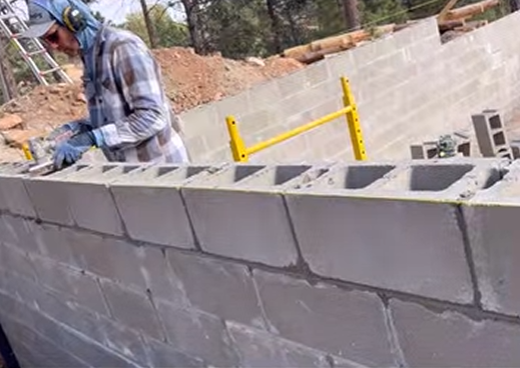Construction Project Risk Management: Minimizing Delays and Cost Overruns
13 Lectura mínima
)
agosto 13, 2023
Construction projects are complex undertakings that involve multiple stakeholders, extensive planning, and coordination of various activities. However, even with meticulous planning, delays and cost overruns can still occur and have a significant impact on the success of a project. To mitigate these risks and ensure smooth project execution, construction project risk management plays a crucial role. By understanding the principles and strategies of risk management, construction professionals can minimize delays and cost overruns, ultimately delivering projects on time and within budget.
Understanding Construction Project Risk Management
Construction project risk management involves identifying, analyzing, and addressing potential risks that could impact project timelines and budgets. This comprehensive approach helps project teams anticipate and mitigate risks, ensuring the successful completion of a construction project.
Construction projects are complex endeavors that involve a multitude of stakeholders, from architects and engineers to contractors and suppliers. Each stage of a construction project, from the initial planning and design to the actual construction and operation, presents its own set of challenges and potential risks. Without proper risk management, these risks can lead to delays, cost overruns, and even project failure.
One of the key components of construction project risk management is the identification of potential risks. This involves a thorough analysis of the project scope, schedule, and budget, as well as an assessment of external factors that could impact the project, such as regulatory requirements and environmental conditions. By identifying these risks early on, project teams can develop strategies to mitigate their impact and ensure a smoother project execution.
Definition of Construction Project Risk Management
Construction project risk management is the process of identifying, analyzing, and minimizing potential risks and uncertainties that may arise during the different stages of a construction project, from planning and design to construction and operation. It involves proactive measures to anticipate and mitigate these risks, ensuring that projects are delivered on time and within budget.
During the planning and design phase, construction project risk management involves conducting feasibility studies, evaluating site conditions, and assessing the project's financial viability. This helps project teams identify potential risks related to site constraints, budget limitations, and technical feasibility. By addressing these risks early on, project teams can make informed decisions and adjust the project plan accordingly.
As the construction phase begins, risk management focuses on ensuring the availability of necessary resources, such as materials, equipment, and skilled labor. It also involves monitoring and controlling project progress, identifying potential bottlenecks or issues that could impact the project's timeline and budget. By actively managing these risks, project teams can take corrective actions and keep the project on track.
Importance of Risk Management in Construction
The construction industry is inherently risky, with numerous variables and uncertainties that can impact project outcomes. These risks can stem from various sources, including weather conditions, design changes, material availability, labor productivity, and regulatory compliance. Effective construction project risk management helps project teams identify and address these risks proactively, minimizing delays and cost overruns.
By implementing a robust risk management process, construction projects can benefit in several ways. Firstly, it allows project teams to anticipate potential risks and develop contingency plans, reducing the likelihood of unexpected disruptions. Secondly, it helps in optimizing resource allocation, ensuring that materials and labor are available when needed, and avoiding costly delays. Lastly, it enhances communication and collaboration among project stakeholders, fostering a proactive and problem-solving mindset.
Furthermore, construction project risk management is not a one-time activity but an ongoing process throughout the project's lifecycle. As new risks emerge or existing risks evolve, project teams must continuously reassess and update their risk management strategies. This iterative approach ensures that risks are effectively managed and mitigated, leading to successful project outcomes.
Identifying Risks in Construction Projects
Identifying risks is a crucial step in the construction project risk management process. Understanding potential risks allows project teams to develop appropriate risk response strategies and allocate resources effectively. By proactively identifying and addressing risks, construction projects can avoid costly delays, disputes, and other challenges that can impact project success.
When it comes to construction projects, there are several common risks that project teams need to consider:
Common Risks in Construction Projects
- Weather-related delays and disruptions: Construction projects are often at the mercy of unpredictable weather conditions. Adverse weather, such as heavy rain, storms, or extreme temperatures, can lead to delays in construction activities and impact project timelines.
- Unforeseen site conditions: Despite thorough site investigations and assessments, unforeseen conditions can arise during construction. These may include encountering hazardous materials, unstable soil conditions, or hidden underground utilities, which can lead to additional costs and delays.
- Changes in project scope or design: Construction projects are dynamic, and changes to project scope or design are not uncommon. These changes can introduce new risks, such as increased costs, schedule impacts, and potential conflicts with existing project plans.
- Supply chain disruptions: Construction projects rely on a complex network of suppliers and subcontractors. Any disruption in the supply chain, such as material shortages, transportation issues, or subcontractor delays, can have a cascading effect on the project's progress.
- Contractual issues and disputes: Construction projects involve multiple parties, including owners, contractors, subcontractors, and suppliers. Contractual issues, such as payment disputes, scope disagreements, or legal conflicts, can lead to project delays, cost overruns, and strained relationships.
- Workforce availability and productivity: The availability of skilled labor and workforce productivity can significantly impact construction projects. Labor shortages, skill gaps, or low productivity levels can lead to schedule delays, increased costs, and compromised project quality.
Tools and Techniques for Risk Identification
Several tools and techniques can aid in identifying and assessing risks in construction projects. These methods help project teams gather relevant information, analyze potential risks, and develop effective risk management strategies:
Brainstorming sessions involving project team members and stakeholders: By bringing together the collective knowledge and experience of project team members and stakeholders, brainstorming sessions can uncover a wide range of potential risks. These sessions encourage open discussion and idea sharing, ensuring that various perspectives are considered.
Historical data analysis of similar projects: Examining historical data from past construction projects can provide valuable insights into potential risks. By analyzing project records, lessons learned, and industry benchmarks, project teams can identify recurring risks and develop strategies to mitigate them.
Expert interviews and consultations: Seeking input from subject matter experts and industry professionals can help identify risks that may not be apparent to the project team. Experts can provide valuable insights based on their experience, knowledge, and understanding of the construction industry.
Risk registers and checklists: Risk registers and checklists are systematic tools that help project teams identify and document risks. These tools provide a structured approach to risk identification, ensuring that no potential risks are overlooked. Risk registers allow project teams to assess the likelihood and impact of each risk, enabling prioritization and allocation of resources.
Site inspections and surveys: Conducting thorough site inspections and surveys can reveal potential risks associated with the project's physical environment. By examining the site conditions, identifying potential hazards, and assessing any existing infrastructure, project teams can proactively address risks that may impact construction activities.
By utilizing these tools and techniques, project teams can enhance their ability to identify and assess risks in construction projects. This comprehensive approach to risk identification lays the foundation for effective risk management throughout the project lifecycle.
Analyzing and Evaluating Construction Project Risks
After identifying potential risks, it is essential to analyze and evaluate their potential impact on the project. This process involves assessing the likelihood of occurrence and the potential consequences of each risk event. By conducting a thorough analysis and evaluation, project teams can effectively manage and mitigate risks, ensuring the successful completion of construction projects.
There are two primary methods for analyzing and evaluating construction project risks:
Quantitative Risk Analysis
Quantitative risk analysis involves the use of numerical data and statistical models to assess the probability of various risk events and their potential impact on the project's timeline and budget. This analysis provides project teams with quantitative insights, enabling them to make informed decisions and allocate resources effectively.
During the quantitative risk analysis process, project teams gather historical data, such as past project performance, to identify patterns and trends. They also consider external factors, such as market conditions and regulatory changes, that may influence the occurrence and impact of risks. By applying statistical techniques, such as Monte Carlo simulation, project teams can estimate the likelihood of different risk events and their potential consequences.
The quantitative risk analysis process also involves conducting sensitivity analysis, which helps identify the most critical risks that have the greatest impact on the project's objectives. By understanding the magnitude of each risk's influence, project teams can prioritize their risk response strategies and allocate resources accordingly. Additionally, quantitative risk analysis enables project teams to assess the potential effectiveness of different risk mitigation measures and select the most appropriate ones.
Qualitative Risk Analysis
Qualitative risk analysis involves a more subjective assessment of risks based on their perceived severity, using criteria such as high, medium, or low. This analysis is often conducted through expert judgment, involving the input of experienced professionals who have a deep understanding of the project and its associated risks. Qualitative risk analysis helps project teams prioritize risks and develop appropriate risk response strategies.
During qualitative risk analysis, project teams evaluate each identified risk based on its potential impact on project objectives, such as cost, schedule, quality, and safety. They consider factors such as the likelihood of occurrence, the extent of potential consequences, and the project's overall risk tolerance. By assigning qualitative ratings to each risk, project teams can create a risk register that provides a comprehensive overview of the project's risk landscape.
Furthermore, qualitative risk analysis facilitates communication and collaboration among project stakeholders. By involving key stakeholders in the risk assessment process, project teams can gain valuable insights and perspectives. This collaborative approach ensures that risks are thoroughly evaluated and that appropriate risk response strategies are developed and implemented.
In conclusion, analyzing and evaluating construction project risks is a crucial step in ensuring project success. By employing both quantitative and qualitative risk analysis methods, project teams can gain a comprehensive understanding of potential risks and their potential impact. This knowledge empowers project teams to make informed decisions, allocate resources effectively, and develop appropriate risk response strategies. Ultimately, a robust risk analysis and evaluation process contributes to the overall success of construction projects.
Strategies for Minimizing Delays in Construction Projects
Delays are a common occurrence in construction projects, but with effective risk management strategies, they can be minimized. Here are some techniques to consider:
Effective Project Planning and Scheduling
Sound project planning and scheduling are crucial to avoid delays. This includes developing detailed work breakdown structures, establishing realistic timelines, and identifying critical paths. By carefully planning and scheduling each project phase, project teams can minimize potential delays and adapt to unforeseen circumstances efficiently.
One important aspect of effective project planning is the creation of a comprehensive project scope. This involves clearly defining the project objectives, deliverables, and constraints. By having a well-defined scope, project teams can better allocate resources, anticipate potential delays, and proactively address any challenges that may arise.
Furthermore, effective project planning involves conducting thorough risk assessments. Identifying potential risks and developing contingency plans can help mitigate delays caused by unforeseen circumstances. By having alternative strategies in place, project teams can respond quickly and effectively, minimizing the impact on the overall project timeline.
Efficient Resource Management
Resource management plays a vital role in preventing delays. Proper allocation and utilization of labor, equipment, and materials ensure that the required resources are available when needed. Regular monitoring and optimization of resource allocation help avoid bottlenecks and keep the project on track.
In addition to efficient resource allocation, effective communication and collaboration among project stakeholders are essential. By fostering a collaborative environment, project teams can streamline decision-making processes, resolve conflicts promptly, and avoid delays caused by miscommunication or lack of coordination.
Another key aspect of resource management is the implementation of technology solutions. Advanced project management software can help automate processes, improve data accuracy, and enhance project visibility. By leveraging technology, project teams can identify potential delays in real-time, make informed decisions, and take proactive measures to keep the project on schedule.
Furthermore, effective resource management involves regularly monitoring and evaluating project progress. By tracking key performance indicators and conducting periodic assessments, project teams can identify potential delays early on and take corrective actions promptly. This proactive approach helps prevent delays from escalating and ensures that the project stays on track.
Techniques to Prevent Cost Overruns
Cost overruns can have a significant impact on a construction project's budget and profitability. Implementing the following techniques can help mitigate the risk of cost overruns:
Accurate Cost Estimation
Thorough cost estimation and budgeting at the early stages of a project are essential for minimizing the risk of cost overruns. This includes considering all relevant factors, such as labor, materials, equipment, permits, and potential contingencies. Accurate cost estimation helps ensure that the project is adequately funded and eliminates surprises during execution.
Regular Cost Monitoring and Control
Continuous monitoring and control of project costs are necessary to prevent overruns. This involves tracking expenses against the budget, identifying any deviations, and taking corrective actions promptly. Regular cost reporting and analysis allow project teams to make data-driven decisions and proactively address potential cost overruns.
Implementing a Risk Management Plan
Developing and implementing a comprehensive risk management plan is essential for effective risk management in construction projects. Here are the steps involved:
Steps in Developing a Risk Management Plan
Identify and assess potential risks
Establish risk thresholds and tolerance levels
Develop risk response strategies
Assign responsibilities and resources for risk management
Monitor and review risks throughout the project lifecycle
Role of a Risk Manager in a Construction Project
A risk manager plays a crucial role in overseeing the risk management process in a construction project. Their responsibilities include:
- Identifying and analyzing potential risks
- Developing risk mitigation strategies
- Monitoring and controlling risk throughout the project
- Ensuring compliance with risk management protocols
- Communicating and reporting risk-related information to stakeholders
Case Studies of Successful Risk Management in Construction
Examining real-life case studies of successful risk management in construction projects can provide valuable insights and practical examples. Here are two examples:
Case Study 1:
Describe the specific project and how effective risk management strategies were implemented. Highlight the key risks identified and mitigated, as well as the resulting positive outcomes.
Case Study 2:
Provide another detailed case study, focusing on the risk management practices that contributed to the success of the project. Emphasize the lessons learned and the impact of risk management strategies on project timelines and budgets.
Future Trends in Construction Project Risk Management
The field of construction project risk management is continually evolving, with emerging trends and technologies reshaping how risks are identified, analyzed, and mitigated. Here are some future trends to watch:
Technological Innovations in Risk Management
Advancements in technology, such as the use of artificial intelligence, data analytics, and predictive modeling, are transforming how risks are managed in construction projects. These technologies enable real-time monitoring, early risk detection, and predictive analysis, enhancing the effectiveness of risk management strategies.
The Impact of COVID-19 on Construction Project Risk Management
The COVID-19 pandemic has brought unprecedented challenges to the construction industry, highlighting the need for robust risk management strategies. Factors like supply chain disruptions, workforce limitations, and changing health and safety regulations have intensified the importance of risk identification and mitigation in construction projects.
In conclusion, construction project risk management is a vital process that allows project teams to anticipate, analyze, and minimize potential risks and uncertainties. By understanding the importance of risk management, identifying common risks, and implementing effective strategies, construction professionals can minimize delays and cost overruns. With careful planning, resource management, and the implementation of a comprehensive risk management plan, construction projects can be delivered successfully, meeting client expectations and ensuring long-term industry success.

Post acquisition of Boom & Bucket, the company he founded, Adam now leads Marketplace Growth for Ritchie Bros.














